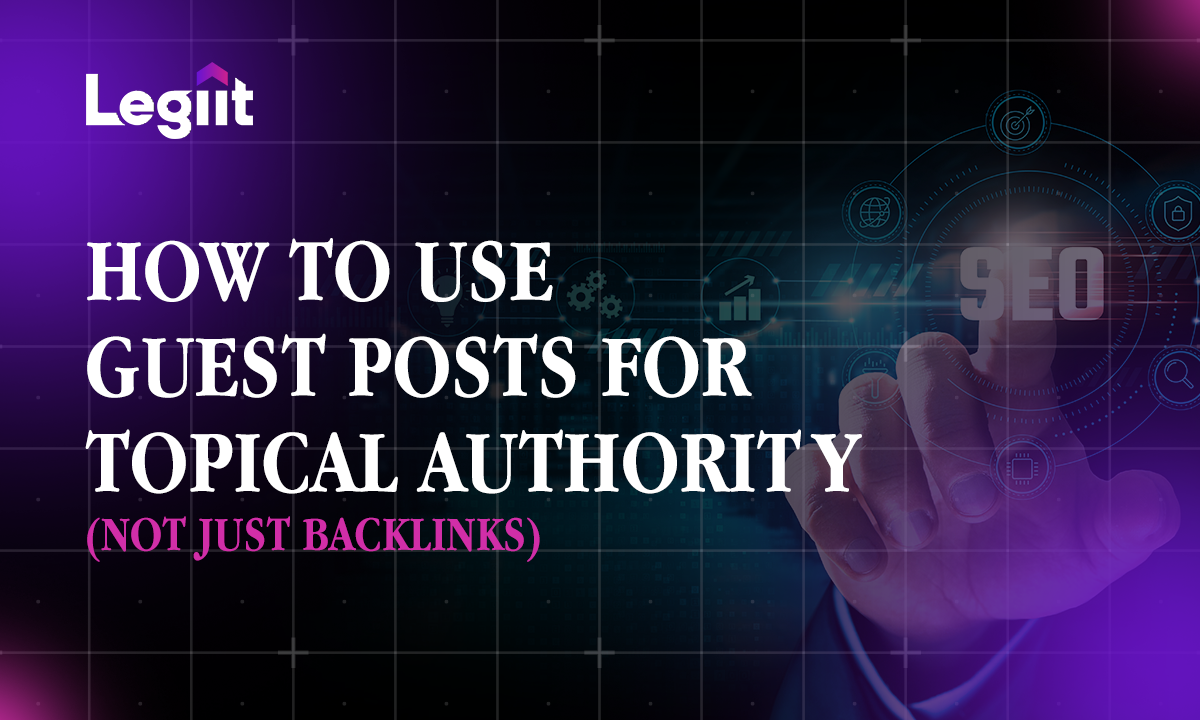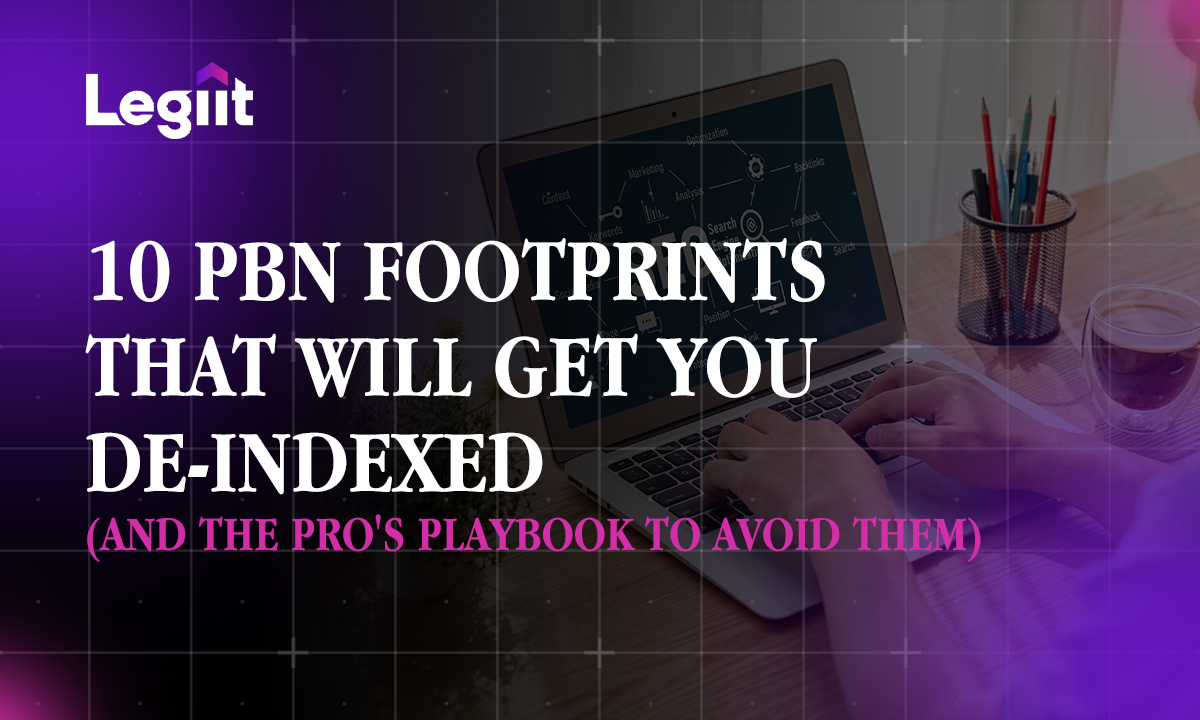Backlinks are a great way to boost your site’s credibility, provided they come from an organic and qualitative source. However, sometimes sites eager to chase higher rankings resort to a spammy backlinking scheme by building low-quality and toxic backlinks which can result in Google penalties and loss of credibility.
But if you have a spammy backlink checker, you can identify and combat harmful links without incurring any damage. In this guide, we’ll discuss what are toxic backlinks and how you can check spam backlinks through toxicity checker tools!
Understanding Spammy Backlinks

Backlinks are considered to be an important signal of quality and trustworthiness by search engines. It helps search engines rank websites on SERP based on quality and relevance. The stronger the backlink, the greater the possibility of ranking higher and becoming more visible.
However, not all backlinks are good. Some sites employ shady tactics to artificially generate backlinks to trick the system and rank higher. These are referred to as "spammy backlinks"; while the number of backlinks eventually increases, it does more harm than good.
How are Toxic Backlinks Created?
Spammers typically use automated software to create toxic backlinks across low-quality or shady sites such as;
- Blog comment sections on unrelated blogs
- Link farms
- Affiliate sites with little unique original content
The main goal of this practice is to inflate the number of backlinks rather than provide any quality reference to a site. What’s more interesting is that sometimes, the linked site owners are unaware that this is even happening.
Since search engines aim to provide the most relevant results, they work to detect these artificial links and may penalize or outright distrust sites that obtain too many spammy backlinks.
When it comes to backlinks, the more the merrier; however, the factor of quality is too significant to ignore. A few dozen links from credible sources can be far more beneficial than hundreds of meaningless links from spammy sites.
How to Identify Spammy Backlinks

Here is how you can effectively identify toxic backlinks:
- The best indicator of a spammy backlink is the overall quality of the site linking to you. Be suspicious of links coming from new sites with irrelevant or bogus content unrelated to the topic.
- Be cautious of links from article farms that produce content filled with excessive keywords.
- Check if there is context for the link or if it was shoehorned in only to boost links.
- Use toxic links checker tools to get more insight.
- Check if multiple links are coming from the same IP range, which may indicate an automated network.
- See if anchor text links use over-optimized commercial keywords rather than natural phrasing. Examine the pace and pattern of new links.
5 Ways Toxic Backlinks Damage Your Website
Listed below are 5 ways toxic backlinks damage your website;
Google Penguin Penalties
If Google detects a large number of unnatural links building to your site, it may manually apply a Penguin penalty. This severely affects your search rankings, and recovering from it can be extremely difficult.
Loss of Ranking Positions
As Google's algorithms continue improving at detecting low-quality links, relying too heavily on spammy backlinks risks a gradual decline in search positions. Any future updates could wipe these rankings out in one go.
Negative SEO Vulnerability
Competitors can purposely build bad links to your site in an attempt to trigger penalties from Google. Spammy links make your site more vulnerable to these negative SEO attacks.
Manual Webspam Actions
Google may choose to manually act against the toxic backlinks scheme by flagging the site as a webspam. This is disastrous for search visibility and requires removing most backlinks to have penalized domains restored.
Risk of Site Removal
In extreme cases, Google reserves the right to remove sites entirely from its index if they violate webmaster guidelines.
How Can You Check Toxic Backlinks? Is There an Accurate Way to Check Spam Backlinks?

Carefully examining your backlink profile is critical to limit the harm of toxic links. However, with large sites having tens or hundreds of thousands of links, manually identifying spammy backlinks can feel overwhelming. Fortunately, there are accurate toxicity checker tools available to check bad backlinks.
Methods and Techniques to Check Bad Backlinks
As mentioned earlier, backlinks remain an important signal used by Google to evaluate websites. However, toxic backlinks can potentially hurt your search ranking and traffic. That’s why regularly checking for bad links pointing to your domain is essential. But what’s the most accurate way to check toxic backlinks?
Here are the top methods and techniques to check spam backlinks.
Google Search Console
Google Search Console provides website owners with limited yet helpful backlink data, including new links from the past 90 days. Under the "Links to Your Site" section, webmasters can analyze linking root domains and observe suspicious flow spikes. While this data has sampling limitations, observing odd link patterns can reveal toxic link issues to investigate further.
Third-Party Backlink Analysis Tools
For more robust backlink audits, webmasters rely on third-party SEO tools like Ahrefs, SEMrush, and Moz. These services crawl the web to build expansive backlink databases. The exploratory interface lists all known backlinks and provides helpful context, like the anchor text, root domain rating, and link location.
Most backlink checkers also classify links as toxic or risky to quickly expose threats. The depth of their link intelligence makes them extremely useful for identifying bad links.
Disavow Backlinks Tool
Websites with manual Google penalties related to unnatural linking can upload suspicious domains directly to Google's Disavow Tool. By signaling domains you either did not request links from or appear designed specifically to manipulate PageRank flow, Google will ignore them when assessing future penalties. This is an extreme step for sites hit with spam penalties.
Outreach to Site Owners
For questionable links from reputable sites, consider reaching out directly to inform them about the suspicious backlink and tactfully request its removal. Many site owners are unaware of all their content and backlinks and are often willing to nofollow or delete paid connections, outdated reviews, improperly placed guest posts, and article submissions when notified.
Backlink Toxicity Checker - 5 Best Toxic Link Checker Tools to Check Bad Backlinks?

Ahrefs
Ahrefs is one of the most powerful toxic links checker tools available, with three pricing plan options. The Lite plan ($99/month) offers basic backlink data, including a full list of referring domains linked to your site. The Standard plan ($199/month) expands capabilities even further with additional metrics, including live anchor texts, root domain, and page-level details, as well as a domain rating. The advanced plan is the most complete tool, costing $399 per month.
Key features beneficial for toxic backlinks include;
- Full historic linking data
- Manual and algorithmic spam score ratings for each backlink
- Clickable filters to display good vs bad links
- Cloud filters to label specific links for ongoing monitoring
- Batch exporting options
- Customizable alerts
Moz
Moz offers a complete interface for conducting toxic backlink checks through their Link Explorer. Pricing starts at $99/month for their Moz Pro plan, including full linking data. Higher-tier Premium and Enterprise plans provide additional features.
Key capabilities for analyzing bad links include historic linking data, manual and algorithmic spam scores for each domain, sorting and filtering to isolate good vs. bad links, annotating specific links, comparing multiple domains, and creating custom alerts.
Additional views provide graphs summarizing good links vs bad links and trends over time. Their Link Intersect tool also reveals sites sharing the same toxic links for further investigation.
For managing toxic backlinks, Moz allows uploading lists directly to Google. This uses Moz's machine learning to predict the impact links have on rankings, then suggests links to focus efforts on first.
Such capabilities make Moz a fully featured solution for not only revealing toxic links but also actively managing their removal. Moz's competitive pricing, UX design, and focus on SEO have made it the long-trusted leader that both SEO professionals and webmasters rely on for combating toxic links.
SEMrush
SEMrush is an effective spammy backlink checker tool that crawls and indexes over 140 million root domains, providing the deepest backlink intelligence. Every link is assigned five toxicity rating metrics from Referring Domain, Linking Page, Anchor Text, Link Position, and Link Target relevancy models to expose even borderline bad links.
Unique features beneficial for toxic link management include the Threats module, which estimates potential negative SEO attacks, a full Link Risk Analysis dashboard with graphics summarizing good links vs toxic links, a filterable Backlinks table detailing every link, and flexible custom reporting modules to monitor links long term.
Monitor Backlinks
Monitor Backlinks is a SaaS platform focused specifically on tracking website backlink profiles over time. Its core capability is enabling users to establish customizable alerts triggered by changes and threats detected across incoming links, anchor texts, and referral sources.
Useful alerts can warn of sudden link spikes, mass low-quality links from the same domain, questionable geo sources, and toxic keywords.
In terms of features, Monitor Backlinks provides a full interface to explore backlink data in detail with helpful toxicity ratings to expose risky links. Graphical views display historic trends and changes to anchor text diversity, referral domains, and geographic sources.
Plans start at $99 per month for tracking two domains with standard alerts. Higher tier plans at $249 and $499 a month support more domains and advanced alerts, plus allow exporting full linking data tables for further analysis, making Monitor Backlinks an affordable, simplified toxic link monitoring system.
RankWatch
While less robust than explorer-focused solutions, RankWatch as a toxic link checker stands out for its emphasis on tracking and alerting specifically around toxic backlinks. Pricing starts at $39 per month for monitoring 5 domains. The core feature is highly customizable email and dashboard alerts that trigger when defined backlink threats occur.
In terms of analysis capabilities, RankWatch crawls backlink data, providing a listing of all known referring domains and actual linking pages with some categorization around threat level and quality. Useful views include historic graphs summarizing trends for follow/nofollow links, geographic sources, and top anchor texts with filters to isolate well vs bad patterns.
For webmasters looking for an affordable always-on monitoring system to receive warnings anytime toxic links appear targeting their sites, RankWatch delivers. It may need a deeper analysis comparing link intersections or running manual audits. But its focus on tracking and reacting to threats in real-time fills an important niche in keeping sites safe from damaging links.
Is a Spammy Backlink Checker SEO Tool Worth it?

With Google algorithm updates steadily improving at detecting and penalizing spammy backlinks, relying on shady link building tactics can seem very risky compared to a few years ago. Some may wonder whether link checkers are still necessary or if Google has spam links under control.
However, the incentives of rankings and traffic mean black hat link builders continue finding new ways to manipulate backlinks. This makes maintaining visibility through quality links more critical than ever. In that context, a dedicated spammy backlink checker is absolutely still worth the investment.
Here is why;
Even with sophisticated algorithms, Google still benefits from site owners providing signals around insecure links to ignore. Backlink analysis tools empower webmasters to monitor the integrity of links pointing to their domain. Instead of waiting in fear for the next Google penalty update, they can proactively identify and disavow spam links before they ever pose an issue.
Checking spammy backlinks also aids in response if your site does get flagged. Documenting previous link auditing and clean-up efforts makes reconsideration requests much more compelling. And if negative SEO attacks occur, rapid response disavowing links has a better chance of avoiding lasting damage. In addition, many backlink checkers provide wider SEO benefits beyond solely toxic links in optimizing overall link equity.
The minimal time and cost involved is a good investment in the context of security and peace of mind. So, for the level of protection gained against the threats targeting websites today, a quality backlink checker is as important as ever.








 Up & Coming Talent
Up & Coming Talent




 Download
Download